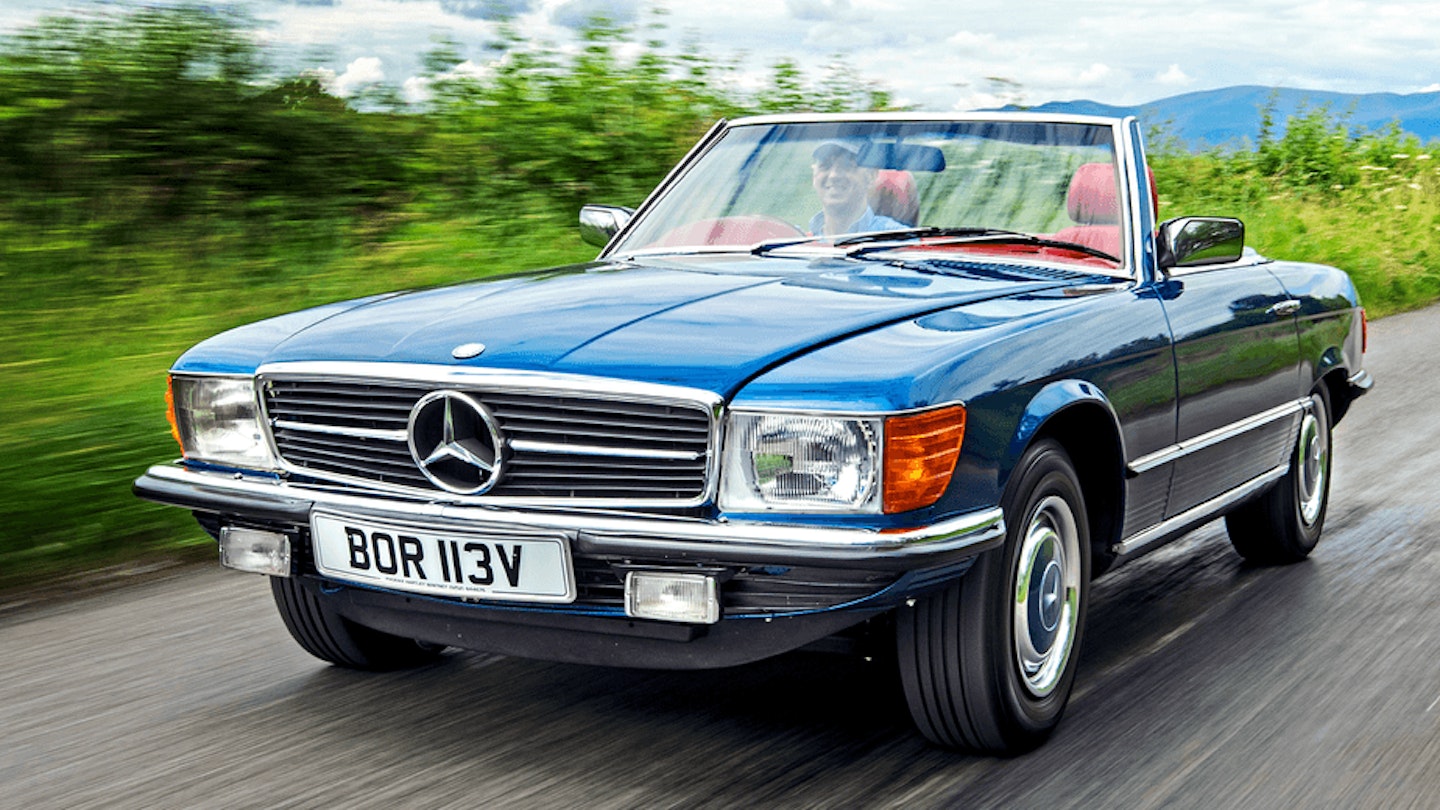[ Buying Guide] Mercedes-Benz SL R107
Prices are stabillising for this elegant coupé and cabrio, so now is the time to buy
Words JAMES WALSHE & RICHARD GOODING Photography ANDY MCCANDLISH
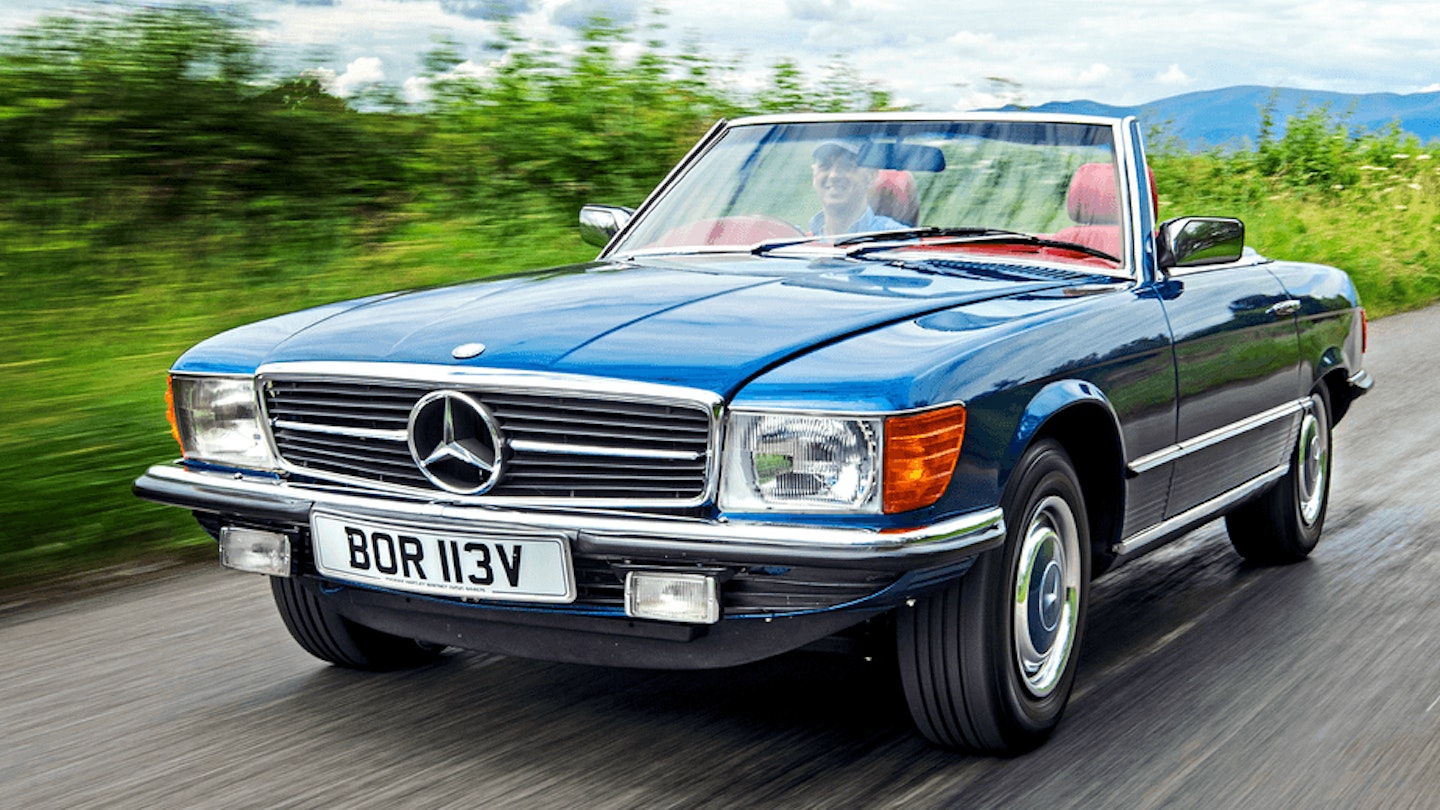
The Mercedes R107 was built to a high standard, but that doesn’t mean it’s immune to corrosion
Stylish and beautifully made, the R107series SL and C107 SLC showed the rest of the world how to make a luxury cruiser. It was so good that it took Mercedes-Benz almost 20 years to replace it. Arriving in 1971, the model was launched as both a roadster and coupé, named SL and SLC respectively. The SL had a soft-top and optional rear seats, plus a removable hardtop; the SLC proper rear seats and optional sunroof.
Classy and with a film star image – the car was a favourite among US TV drama casting agents in the Seventies, think Bobby Ewing in Dallas and Jennifer Hart in Hart to Hart – the 107-series Mercedes might not be the cheapest classic to run because of its large engines, but it has an ability to chew up miles so stylishly and effortlessly. Keep your SL or SLC away from road salt and it’ll probably outlast you.
Values have increased in recent years, but there is no major difference in prices engine to engine – the condition and history of the car matter more. Manual examples are only popular with a small number of buyers but fears around the complexity and economy of V8 models are unfounded. The SLC coupé is also less popular than the SL.
Although there are still untidy cars about, buy well – get the best you can afford – and you’ll have a well-made, comfortabe, and smooth-performing classic with a first-class image. The 107-series is a luxurious cruiser you’ll enjoy driving on any occasion.
[What to pay]
► Scruffy SL R107s can start from £2750, but a rough car will be far more expensive to restore than one that’s already had the work done.
► Pay £7500 upwards for the 280/350/380 and 420SL in good condition. Mint cars from £20k.
► Expect to secure a concours-condition car from £30,000 from a dealer, with post-facelift 300SLs available from £35k.
► Mint SLCs from £12.5k, concours cars from £20k.
► Top-spec 500SL and export 560SL start at £10k for good condition examples, rising to £38,500 for best-condition, dealer-sold cars.
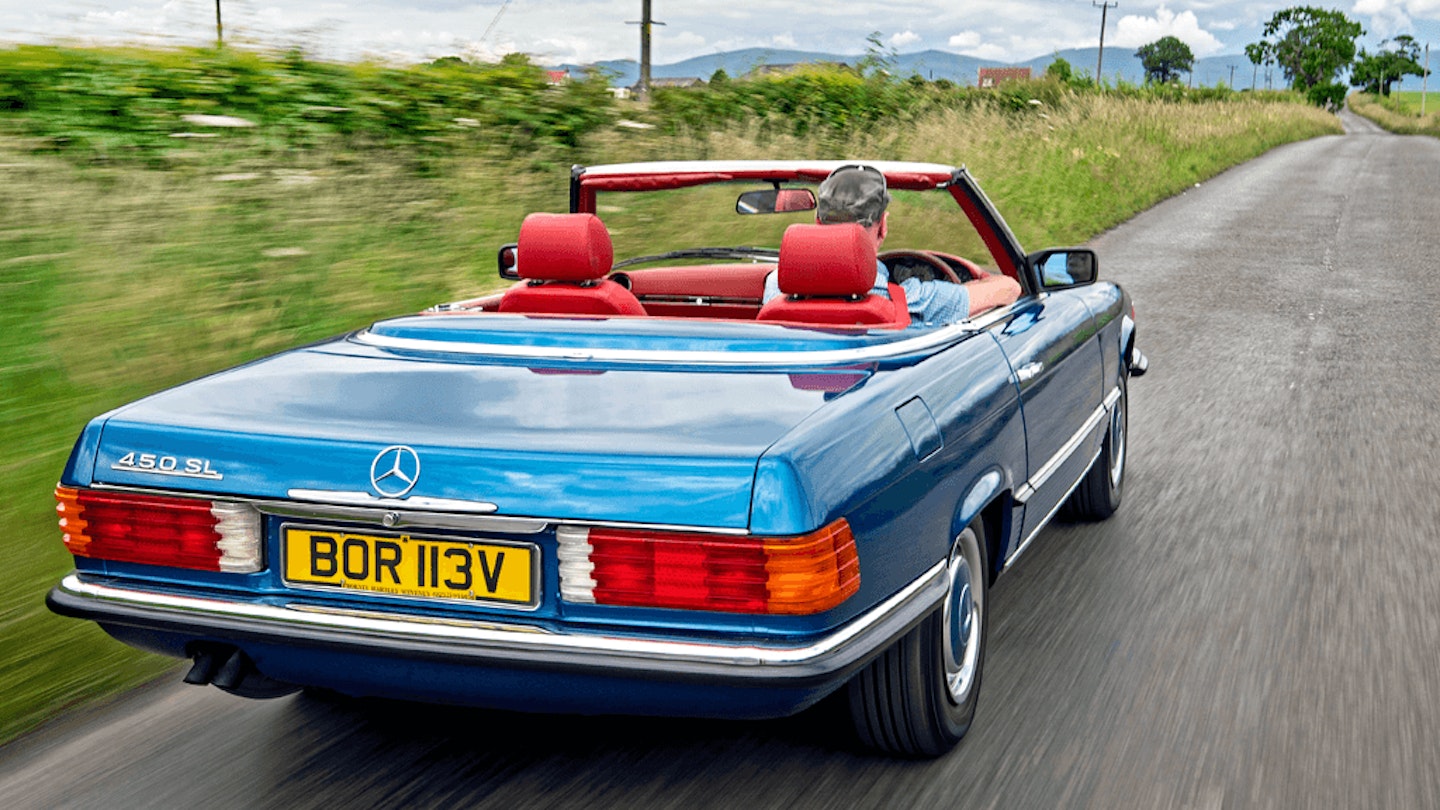
Large-capacity I6 and V8 engines and comfortable cabins give R107 SLs great cruising ability
Which is which?
► Launched in 1971, the 350SL and 350SLC were based on the chassis of the W114 saloon and replaced the W113 SL ‘Pagoda’ and W111 coupé respectively. Both were powered by a 197bhp fuel-injected 3499cc V8 engine. The wheelbase of the SLC was 360mm longer to include decent-sized rear seats.
► More powerful 450SL and 450SLC introduced in 1973 with 222bhp 4.5-litre V8. In-line six-cylinder, 182bhp 280SL and 280SLC arrived in July 1974.
► New 5.0-litre 450SLC joined the range in 1977, effectively a homologation model to allow Mercedes to compete in the 1978 World Rally Championship.
► All alloy-engined 237bhp 500SL launched in 1980, 350SL replaced by 215bhp 380SL. Discontinuation of 450-badged models. Subtle revisions included addition of a front spoiler, and the introduction of a four-speed automatic gearbox that replaced the previous three-speed unit.
► SLC discontinued in 1981 after 62,888 had been built. Replaced by SEC, based on W126 S-Class.
► Facelift in 1985 saw 185bhp 300SL replace 280SL, with the option of four or five-speed manual gearbox.
► New 420SL with 215bhp added to range, and all engines had the option of a catalytic converter.
► Export 560SL model with 226bhp introduced for US, Australian and Japanese markets in 1986.
► The R107 SL discontinued in 1989 after production numbered a total of 237,237 units, replaced by the more technologically advanced R129-generation SL.
Body work and structure
R107-series Mercedes were built to a very high standard, so avoid scruffy examples as it may indicate a particularly hard life. The later the model, the less likely you are to find major rust. Later, facelifted post1986 cars are by far the best in this respect, and pre1976 versions definitely the worst. Check the sills, wheelarches, floors and box sections. The rear panels and valances can also exhibit signs of corrosion, as can the windscreen frame and door bottoms. Also closely examine the bulkhead – eight screws allow you to remove the blower cover so you can inspect it. Damp footwell carpets are usually a sign of trouble from blocked bulkhead drain holes. Repairs quickly become highly involved and expensive.

Raise and lower soft-top to check operation and fit
Bumpers are also prone to corrosion, particularly the rear corners. These are easy to replace, but budget for just under £500 a corner from a specialist such as The SL Shop (theslshop.com). Coupé rear windows can also delaminate, and rust can surface in the parcel shelf area. Any dampness in the boot is most likely caused by boot floor corrosion, poor boot seal rubber or rear light units letting in water.
The SL was a hit in the US, where two-thirds of them were sold. Similarly to MG and Triumph roadsters of the same era, this has led to a trend of bringing rust-free dry-state cars back to Europe. If you’re considering one, beware that subsequent buyers may be put off by their larger ‘federal’ bumpers as well as the left-hand-drive steering.
Engine and gearbox
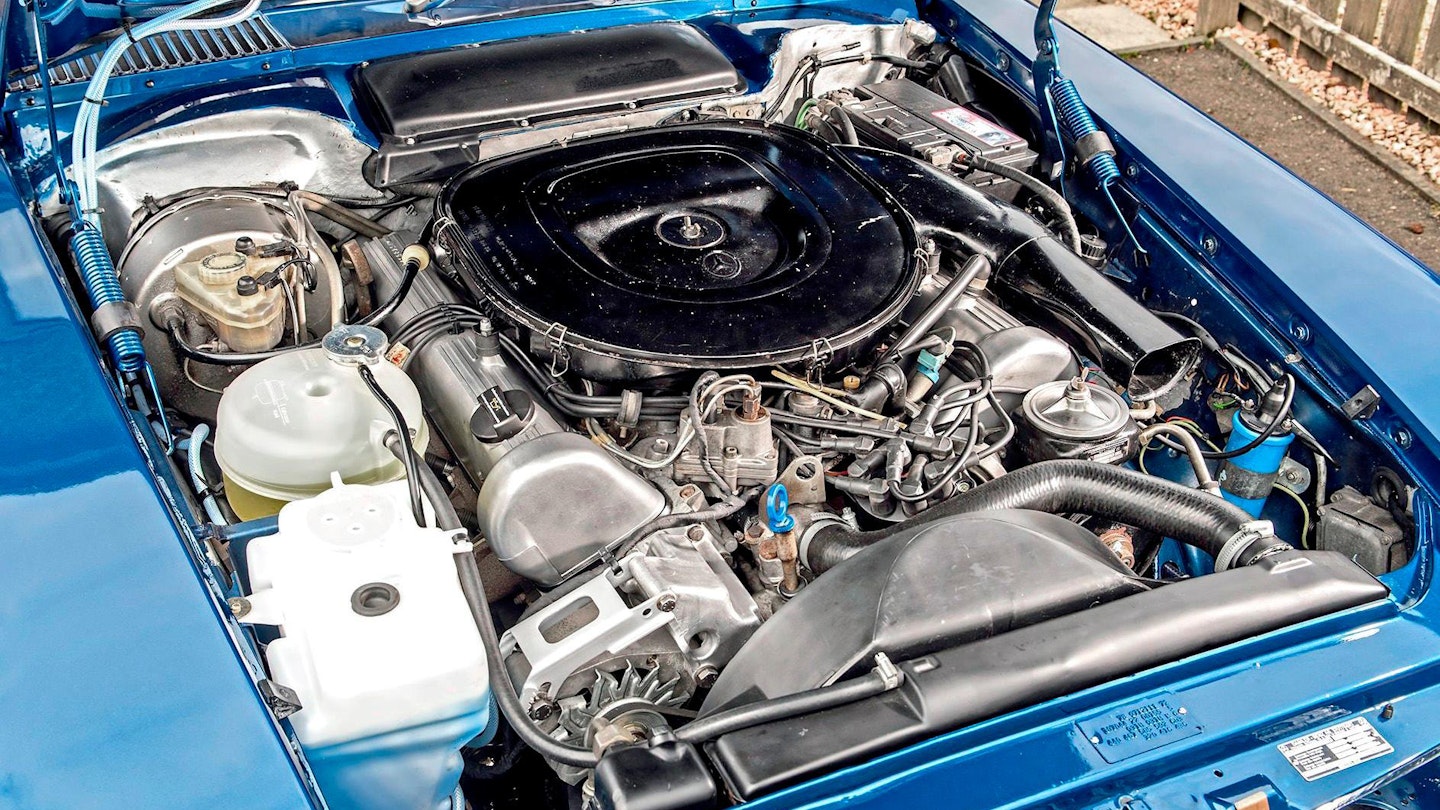
Engines can last 300,000 miles if looked after
Under the bonnet, beware of pre-1976 D-Jetronic fuel injection systems. These can be complex and could end up costing you a lot of money. The replacement K-Jetronic mechanical system was much better. On all cars, look for blue smoke on start-up and listen for loud clicks from the engine that may indicate cam wear. Engines last for 300,000 miles if maintained well but be sure to see any car you’re considering at cold start. Cracks on V8 manifolds is a known issue, and it’s worth nothing that any imported US 107 series model will have lower compression to deal with that country’s strict emissions laws.
It’s widely recommended that owners change the timing chain, guides and tensioner either every ten years or 80,000 miles. All R107 V8s suffer the same stretched timing chain issue, while any early, rattly 280 may just need a tappet adjustment. Non-regular oil and filter changes are usually the culprit. Check any individual car’s history to see if it’s had regular coolant changes. It’s vital the proper antifreeze with the correct inhibitors has been used. Clogged and/or aged radiators are the most common cause of overheating on R107s, so check any potential purchase for a recent replacement.
Starting difficulties, misfiring and poor running may be down to a faulty distributor cap or rotor arm, and a full HT lead set can sometimes benefit the situation, too. An ignition lead set for a 420SL or 500SL costs around £271 from a specialist.
You can buy manual models (280 and 350 versions only), but automatics are far more common but are not without issue. The fluid flywheel can struggle to select first gear and was replaced in 1975 by a torque converter. Listen for excessive noise and check for any issues when selecting gears. Vibrations are usually down to worn propshaft couplings, which aren’t very expensive to either buy or fit – prices can vary from £58-£82 – and can be an easy DIY job.
Suspension and steering
Power steering was standard on all R107s. The steering boxes need adjusting every 100,000 miles, so check that’s been done. If the steering feels vague, it’ll be worth further investigation. The 107 series shared many suspension parts with other contemporary Mercedes models, so spares are easy to come by. Clonks are normally down to worn bushes and it’s important to also check for rusty subframe mounts.
An anti-lock braking system was optional from 1980, and any faults aren’t likely to cost much, because it’ll most likely be a faulty sensor or wiring.
Interior
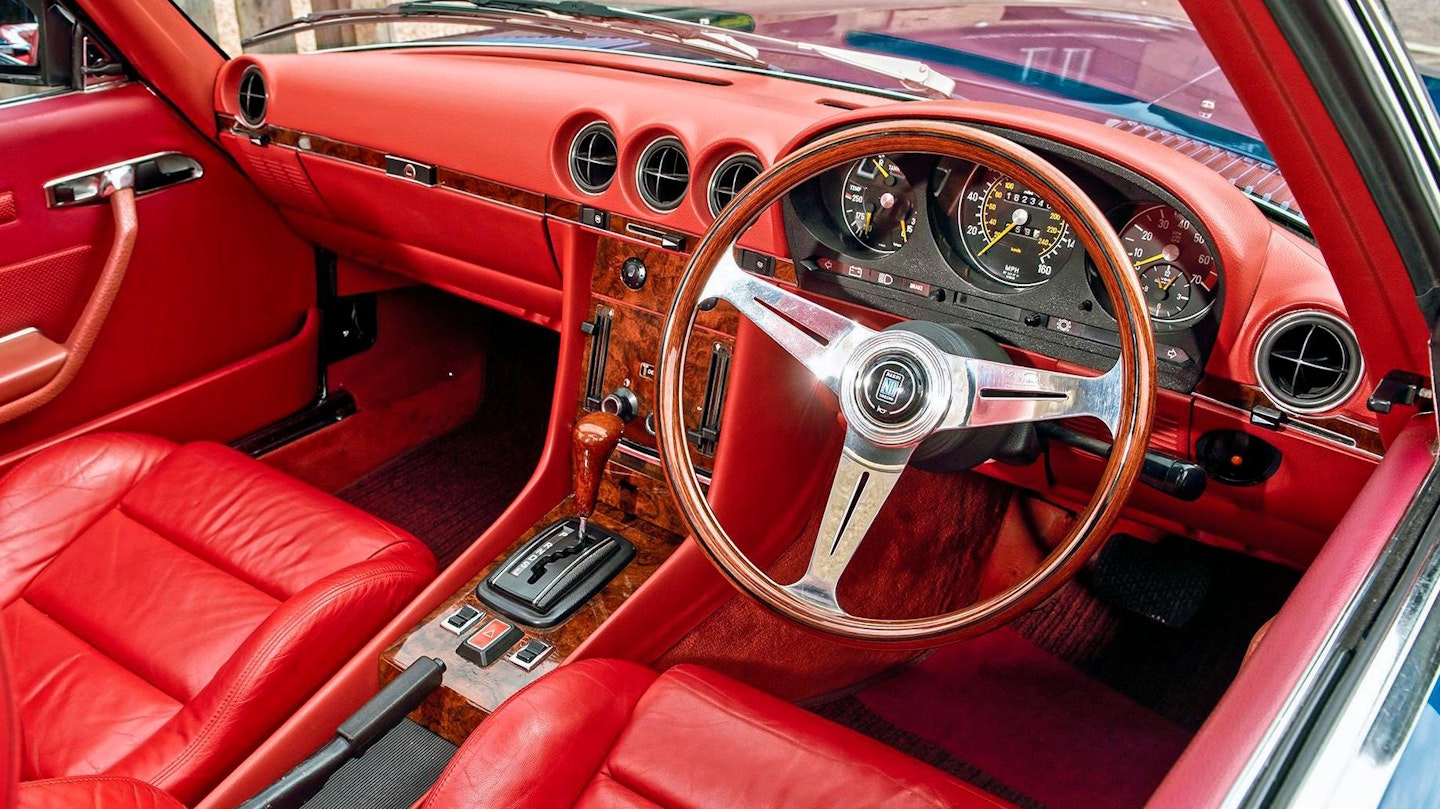
Interiors tend to be long-lasting; make sure electrics work
Four different trims were offered on the R107. Cloth is the least desirable finish, and if worn can be tricky to match when repairing. MB-Tex – a usually long-lasting Mercedes-Benz leather substitute – is the most popular material and is incredibly hard-wearing. Any car that exhibits tatty MB-Tex-covered seats hasn’t been treated well. Plastic trim on early cars suffers with age and sun damage – be especially wary of US imports – but check all cars for wear.
If you find damp in an R107 cabin, it could be caused by a worn hood or window seals or bulkhead corrosion. Complete hoods can be fitted – budget for upwards of £700 for just the hood itself – and if the rear plastic screen has gone cloudy, replacements are available from specialists such as Niemoeller (niemoeller.de) from around £100. All R107s were supplied with a matching hard-top, so any that don’t have one should have its price adjusted. And when viewing a car, raise and lower the canvas roof multiple times to check both operation and fit – lack of use can make them shrink.
As the R107 and C107 were refined cars with many luxurious electric features, and you’ll need to check that these work, too. Control stalks can stop working, and headlamp wash/wipe system malfunctions are common. The central locking in particular can be especially problematic. Operated by a vacuum, you’ll need to check for leaks – the tank on earlier cars is positioned in the front wing; post-1986 models have an electrically triggered system. Heated seat faults are also difficult to repair because the seat must obviously be disassembled to get to the problem.
‘Buy well and you’ll have a well-made and smooth-performing classic car with a first-class image’
Subscribe to Classic Cars today. Choose a Print+ Subscription and you'll get instant digital access and so much more. PLUS FREE UK delivery.
